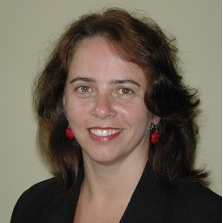Molecular and Tissue Engineering Approaches in Musculoskeletal Regenerative Medicine
A special issue of International Journal of Molecular Sciences (ISSN 1422-0067). This special issue belongs to the section "Molecular Pathology, Diagnostics, and Therapeutics".
Deadline for manuscript submissions: closed (10 October 2019) | Viewed by 97767
Special Issue Editors
Interests: molecular gene therapy; human regenerative medicine; tissue engineering; musculoskeletal research; stem cells
Special Issues, Collections and Topics in MDPI journals
Interests: human musculoskeletal disorders; clinical orthopaedics; animal models; human regenerative medicine
Special Issues, Collections and Topics in MDPI journals
Special Issue Information
Dear Colleagues,
Injuries affecting the various tissues of the musculoskeletal system (articular cartilage, bone, meniscus, and tendons/ligaments) do not fully heal by themselves due to a limited or unsatisfactory ability of these tissues for spontaneous repair. While a number of clinical options are available to address such problems, none are capable to reproduce the native tissue structures and original functions in patients, showing the vital need for novel alternatives that may improve the current therapies by stimulating the reparative processes in sites of injury. In this regard, a number of molecular options may be envisaged, alone or in combination, based on the application of regenerative (differentiated or progenitor) cells, candidate genes, and biomaterials adapted for each type of tissue and disease. The goal of this Special Issue is to offer an overview of the most advanced procedures that may be used as tools to improve the healing of musculoskeletal disorders in future translational approaches.
Prof. Dr. Magali Cucchiarini
Prof. Dr. Henning Madry
Guest Editors
Manuscript Submission Information
Manuscripts should be submitted online at www.mdpi.com by registering and logging in to this website. Once you are registered, click here to go to the submission form. Manuscripts can be submitted until the deadline. All submissions that pass pre-check are peer-reviewed. Accepted papers will be published continuously in the journal (as soon as accepted) and will be listed together on the special issue website. Research articles, review articles as well as short communications are invited. For planned papers, a title and short abstract (about 100 words) can be sent to the Editorial Office for announcement on this website.
Submitted manuscripts should not have been published previously, nor be under consideration for publication elsewhere (except conference proceedings papers). All manuscripts are thoroughly refereed through a single-blind peer-review process. A guide for authors and other relevant information for submission of manuscripts is available on the Instructions for Authors page. International Journal of Molecular Sciences is an international peer-reviewed open access semimonthly journal published by MDPI.
Please visit the Instructions for Authors page before submitting a manuscript. There is an Article Processing Charge (APC) for publication in this open access journal. For details about the APC please see here. Submitted papers should be well formatted and use good English. Authors may use MDPI's English editing service prior to publication or during author revisions.
Keywords
- Cartilage repair
- Bone healing
- Meniscal lesions
- Tendons and ligament injuries
- Regenerative medicine
- Gene therapy
- Cell therapy
- Tissue engineering







